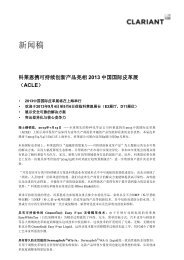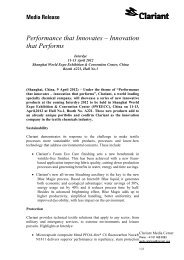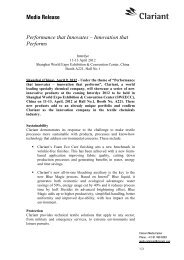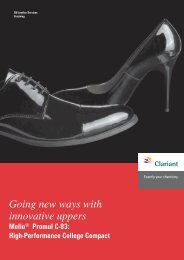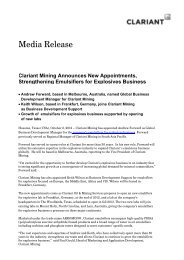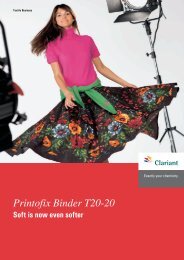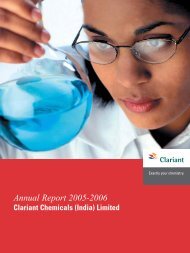Colour Chronicle - June 2013
Colour Chronicle - June 2013
Colour Chronicle - June 2013
You also want an ePaper? Increase the reach of your titles
YUMPU automatically turns print PDFs into web optimized ePapers that Google loves.
PAPER<br />
Chemistry<br />
Explained<br />
How is paper manufactured?<br />
Paper is manufactured mainly from wood<br />
fibres which are broken down either<br />
mechanically or chemically. These wood<br />
fibres are then mixed with auxiliary agents<br />
and large amounts of water to produce a<br />
suspension which is then placed on a sieve.<br />
As the fibres distribute themselves beside and<br />
on top of each other on the sieve, the water<br />
drains away. This produces a homogeneous<br />
fibre composite – the raw paper. The paper<br />
web is then pressed between rolls, a process<br />
in which it is de-watered, compacted and<br />
finally dried. In a further processing cycle,<br />
many types of paper are coated, i.e. treated<br />
with a very thin layer of pigments and<br />
binders. This gives the paper a closed surface<br />
with good printing properties.<br />
How is paper made grease resistant?<br />
Paper intended for use as food packaging<br />
material has to be treated to make it grease<br />
resistant. Two methods are practiced for this<br />
purpose: in the first technique Cartaguard®<br />
KHI is introduced into the fibre suspension<br />
early in the production process so that it is<br />
distributed evenly throughout the entire<br />
paper. In the second method, it is the<br />
finished paper which is impregnated with<br />
Cartaguard® KHI; this is done, for example,<br />
by using a “size press” in which the paper<br />
web is passed between two rolls while<br />
applying a mixture of Cartaguard® KHI and<br />
starch. The impregnating agent doesn’t just<br />
remain on the surface, but also penetrates<br />
into the paper, creating a grease resistant<br />
layer.<br />
How does Cartaguard® KHI repel<br />
grease?<br />
Cartaguard® KHI consists of complex<br />
molecules comprising mainly carbon,<br />
fluorine, oxygen and hydrogen. The shape<br />
of a single molecule can be imagined as<br />
being rather like a comb; the handle of the<br />
comb represents the part of the molecule<br />
that attaches itself to the paper fibre and<br />
combines permanently with it while each<br />
tooth corresponds to a pendant molecular<br />
chain. When a large number of “combs”<br />
– Cartaguard® KHI molecules – arrange<br />
themselves close together on the surface<br />
of every single paper fibre, the fibre is<br />
surrounded by a grease resistant layer. When<br />
a droplet of oil comes into contact with this<br />
layer, it cannot penetrate as it would into<br />
untreated paper. Instead, it simply bounces<br />
off – experts call this the “lotus effect”. Oil<br />
therefore cannot enter the fibres and the<br />
paper remains unstained.<br />
15 COLOUR CHRONICLE__JUNE <strong>2013</strong>



